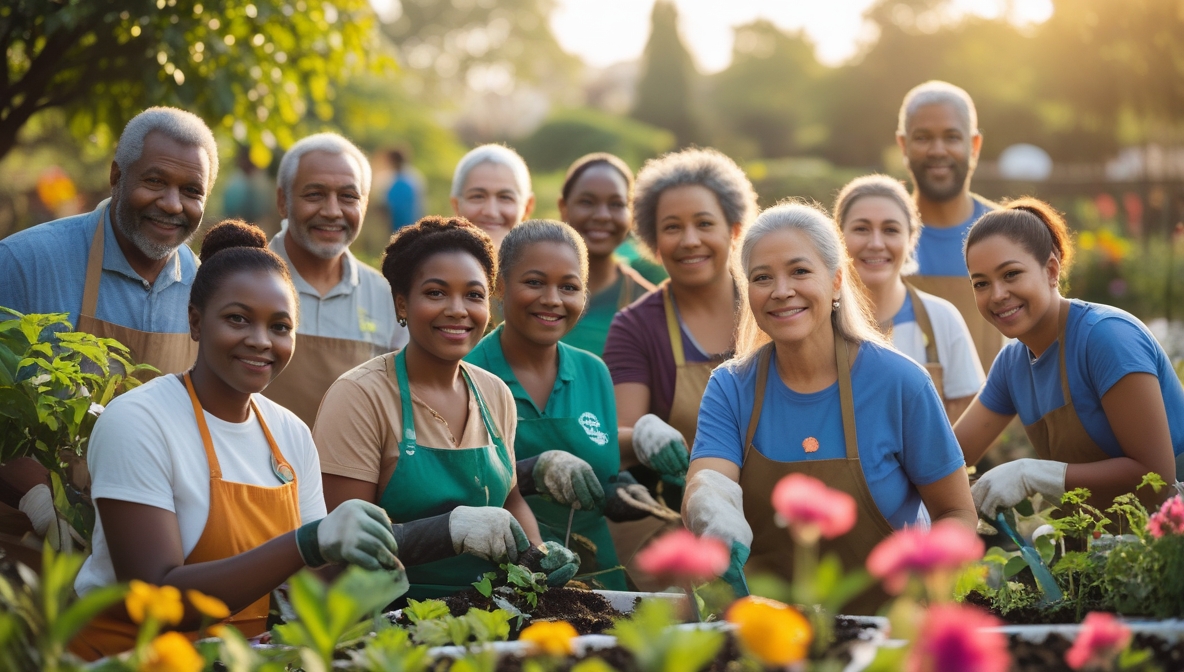Volunteer programs are strengthening local connections—by fostering trust, encouraging shared responsibility, and building bridges between people who might never have met otherwise.
Across Iowa’s Creative Corridor, people are stepping up to give their time to causes that matter. But the results go beyond the task at hand. These programs are stitching tighter social fabric, neighborhood by neighborhood.
1. Creating Spaces for Interaction
Volunteer opportunities bring people together from different backgrounds. Whether it’s a cleanup at a community park or tutoring in after-school programs, volunteers work side by side.
- A tech worker might share a paintbrush with a retired teacher.
- A high school student might learn about civic engagement from a local business owner.
- A newcomer to the city might meet their first friend while packing food pantry boxes.
These interactions, repeated often enough, become relationships. And those relationships build a stronger, more connected community.
2. Restoring Trust in Institutions
Many volunteer programs are organized through city offices, nonprofits, schools, or faith groups. When people work closely with these institutions, they see how local systems function—sometimes slowly, often under strain, but always trying.
Volunteers gain a sense of ownership. They’re more likely to show up to city council meetings, vote in local elections, or speak up about local issues.
In return, institutions gain a deeper understanding of community needs through their volunteers.
3. Providing a Channel for Collective Action
People often want to help but don’t know how. Volunteer programs give them structure and purpose. These programs show what can be done, how to do it, and who to do it with.
Some recent examples from across the Corridor include:
- Community tool libraries staffed by volunteers who repair donated items.
- Neighborhood meal trains organized through local Facebook groups.
- Citizen science teams monitoring water quality in nearby streams.
- Storytime readers who rotate through libraries and early childhood centers.
Each one of these efforts connects people to their neighbors—and to the broader mission of making their community better.
4. Making Long-Term Relationships Possible
One-time volunteering is good. Regular volunteering builds something deeper. Programs that keep volunteers engaged—through monthly meetups, training sessions, or leadership roles—create layers of connection that last.
These relationships carry over into everyday life. Volunteers are more likely to:
- Help a neighbor shovel snow.
- Join a local co-op or makerspace.
- Start a block party or potluck.
- Recommend each other for jobs or services.
This ripple effect is where the real power lies. Friendships formed during a litter pickup can lead to business partnerships or community-wide campaigns later on.
5. Passing Connection to the Next Generation
When kids see their parents or mentors volunteering, they learn that helping out is part of being part of something bigger. Many schools in the Corridor have built service into their curriculum. Students mentor peers, clean up local trails, or assist at shelters—not because it’s required, but because they see it modeled.
This generational shift ensures that community connection isn’t a one-time thing. It becomes a habit, passed down and strengthened each year.
Volunteer programs don’t just help communities function—they help them feel like communities. They bring people into shared spaces, align values through shared work, and create bonds that don’t depend on proximity or social class.
Local connection isn’t built through policy alone. It’s built through shared effort—and in Iowa’s Creative Corridor, that effort is growing stronger every day.
